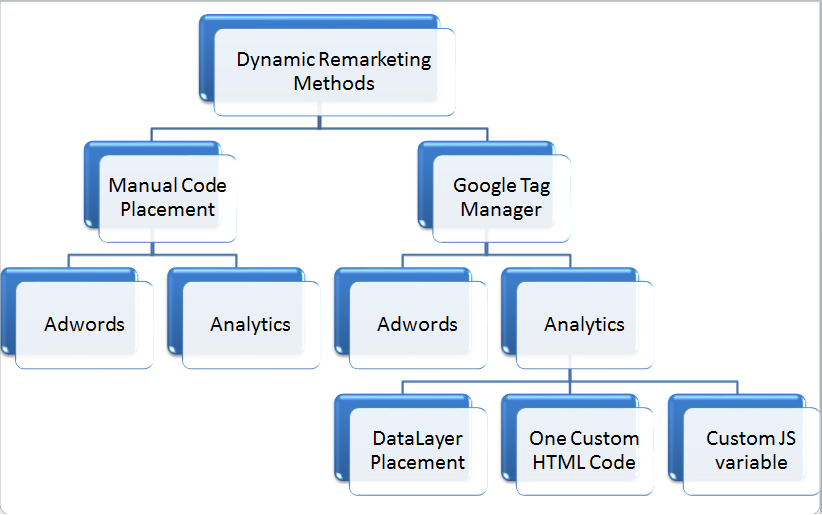A Complete Guide to Remarketing In Google Analytics
A Complete Guide to Remarketing In Google Analytics
Blog Article
Maximize Your ROI With Remarketing in Google Analytics
By taking advantage of the power of user information and customizing ads to details audience sectors, organizations can significantly intensify their conversion prices. The journey to taking full advantage of ROI through remarketing is a nuanced path led with understandings and opportunities that can reshape the trajectory of your marketing undertakings.
Understanding Remarketing in Google Analytics
Recognizing remarketing in Google Analytics is vital for enhancing your electronic advertising strategy. Remarketing enables you to target customers who have formerly seen your internet site or interacted with your application, offering them with tailored ads as they browse other sites or use other apps within the Google Show Network. This method aids keep your brand top of mind and urges customers to go back to your site, inevitably increasing the probability of conversion.
By utilizing Google Analytics, you can track the performance of your remarketing campaigns, gaining valuable insights into customer behavior, interaction, and conversions. This data enables you to fine-tune your messaging, targeting, and bidding process strategies to improve the general performance of your projects.
Additionally, comprehending the different sorts of remarketing lists readily available in Google Analytics, such as conventional, vibrant, and comparable target markets, permits you to create customized and highly fractional campaigns customized to specific individual segments. This degree of granularity can substantially boost the relevance and effect of your remarketing efforts, ultimately optimizing your return on financial investment.
Establishing Remarketing Listings
To effectively apply remarketing projects in Google Analytics, the first step entails creating and configuring remarketing listings targeting specific user sections based on their interactions with your internet site or app. By establishing remarketing checklists, you can customize your marketing efforts to reach users that have currently shown passion in your services or items.
To start, browse to the Admin section of your Google Analytics account and pick the Residential property where you wish to create the remarketing checklist. Then, under the Property column, click 'Target market Definitions' and pick 'Audiences.' Next, click on the red 'New Audience' button and choose 'Create New' to specify the parameters for your remarketing checklist.

Crafting Reliable Remarketing Ads

When crafting your ads, concentrate on producing attention-grabbing headlines and engaging visuals that attract attention to possible consumers. Incorporate solid calls-to-action that motivate individuals to review your website and finish a preferred action. Utilize dynamic remarketing to show customized ads featuring products or solutions that customers have actually previously seen on your site.
Additionally, ensure that your advertisements are mobile-friendly because a significant section of web web traffic comes from mobile phones. Test various advertisement variants to identify which messages and designs drive the most effective results. By continuously refining and optimizing your remarketing advertisements based upon performance information, you can maximize their effectiveness and improve your roi.
Analyzing Remarketing Performance

Via Google Analytics, marketers can track the efficiency of their remarketing projects in real-time, allowing them to identify patterns, patterns, and areas for improvement immediately. By assessing the information, online marketers can establish which advertisements are carrying out well, which target market sections are reacting positively, and which networks are driving one of the most conversions. This level of granularity makes it possible for online marketers to make data-driven choices to optimize their remarketing campaigns for better results.
Optimizing ROI With Remarketing
Evaluating remarketing data in Google Analytics allows online marketers to his response determine opportunities for optimizing roi (ROI) with calculated adjustments - What Is “Remarketing” In Google Analytics?. To optimize ROI with remarketing, it is essential to comprehend the actions of your target market. By examining individual interactions, such as the pages they checked out, the items they checked out, or the activities they took on your site, you can customize your remarketing projects more successfully
Segmenting your target market based upon their habits allows you to create personalized and targeted advertisements that are extra most likely to reverberate with them. By revealing pertinent advertisements to particular segments of your audience, you can increase the chances of conversion and inevitably enhance your ROI.
Moreover, testing various ad creatives, you could try this out messaging, and offers can assist recognize what reverberates finest with your target market. A/B testing enables you to try out different aspects of your ads to identify what drives the highest possible involvement and conversion prices.
Final Thought
To conclude, optimizing ROI with remarketing in Google Analytics requires a critical method to analyzing individual behavior, segmenting audiences, developing customized ads, and maximizing project performance. By leveraging data-driven understandings and checking different techniques, businesses can enhance their remarketing efforts to drive greater involvement and conversion rates. This systematic strategy makes certain that resources are efficiently allocated towards taking full advantage of rois in remarketing campaigns.
Next, click on the red 'New Target market' button and choose 'Develop New' to define the specifications for your remarketing list.
By continually refining and enhancing your remarketing advertisements based on efficiency data, you can optimize their effectiveness and boost your return on investment.
By diving into these understandings, marketing experts can navigate to this website acquire a comprehensive understanding of how their remarketing efforts are reverberating with their target audience and driving conversions. To take full advantage of ROI with remarketing, it is essential to comprehend the actions of your target market.In conclusion, maximizing ROI with remarketing in Google Analytics calls for a tactical method to examining customer behavior, segmenting audiences, producing tailored ads, and maximizing campaign performance.
Report this page